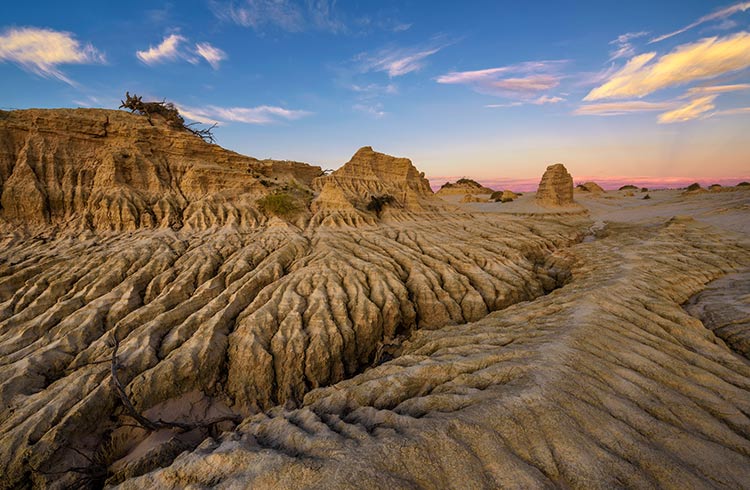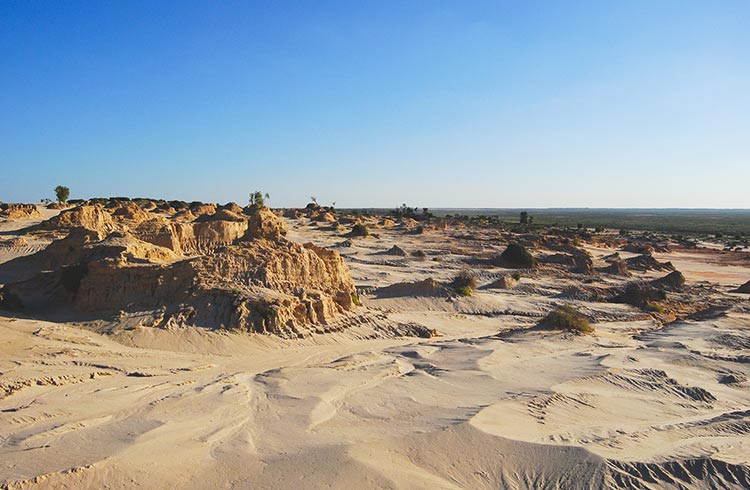5 Snow Travel Safety Tips: How to Stay Safe in Winter
None of us could have imagined the unprecedented events that have unfolded in recent months. For most of us, travel ...
KEEP READING
None of us could have imagined the unprecedented events that have unfolded in recent months. For most of us, travel is now paused but that doesn’t mean dreaming and planning should be put on hold. Here is some inspiration for when we can travel again.
A version of Top Adventures in NSW, From Kosciuszko to Byron Bay first appeared on WorldNomads.com.

Photo © Getty Images/miroslav_1
New South Wales has hundreds of national parks, six World Heritage Areas, and countless charming small towns that dot the coast and country. Home to some of Australia’s best beaches and fascinating Outback towns, New South Wales is best explored by car. Rent a car in Sydney and set off to explore the state with your own set of wheels.
New South Wales is home to more than 870 national parks and reserves, covering more than seven million hectares.
Just south of Sydney, start with the Royal National Park, a mecca for bushwalkers and beach-lovers. The world’s second-oldest national park, it is great for hiking, mountain biking, surfing, and whale watching.
Every year, millions of people head west from Sydney to the Blue Mountains to see the famous Three Sisters, among other sites, in the World Heritage-listed Greater Blue Mountains Area. Get off the beaten path and away from the crowds at Evans Lookout in Blackheath or take in the incredible views from the National Pass.
Just under three hours south of Sydney, Jervis Bay National Park is a perfect weekend getaway. Here you can scuba dive with weedy seadragons and cuttlefish, spot the ubiquitous dolphins, and walk along the impossibly white sand at Hyams Beach.

In Outback NSW, Warrumbungle National Park is Australia’s only Dark Sky Park, selected because of its exceptional quality of starry nights, and is home to Australia’s largest optical telescope. Don’t miss the Breadknife and Grand High Tops walk, considered to be one of the best walks in the state.
Between Armidale and Coffs Harbour, in the state’s mid-north, take the scenic drive along Waterfall Way to see Ebor Falls and pack a picnic to enjoy at the viewing platform. Continue the drive to Dorrigo National Park where you’ll find multiple walking tracks and campsites.
Located off the well-driven east coast trail, Mungo National Park is hiding away in the southwest corner of NSW, 1,006km, or a 15-hour drive from Sydney. This 110,967-hectare national park is rich in indigenous history. From Mungo lookout, it’s quite something to gaze across an ancient ice-age lake bed, where undiscovered bones of original megafauna still lie today and see the iconic ‘Walls of China’ formation, sculpted over thousands of years by wind and rain. This erosion has revealed artifacts, dating back more than 40,000 years, belonging to the Mutthi Muhhti, Ngyiampaa, and Paakantyi aboriginal people.

Avoid the overtouristed hotspot of Byron Bay and instead head to Barrington Tops National Park, which is popular with SUV drivers and campers. During winter, snow falls in this national park. Visit the Koala Hospital in Port Macquarie, where injured and abandoned koala are nursed back to health. Check out the surf at Ballina to catch the waves at Lighthouse Beach and Lennox Head. Discover the ancient World Heritage-listed rainforests of Nightcap National Park near Lismore on the 1.5km Big Scrub loop walking track.
Established in 1913, Canberra is Australia’s capital city, deliberately located halfway between Sydney and Melbourne. It’s home to Parliament House, which is open to the public, and many museums, including the impressive Australian War Memorial, the National Portrait Gallery, Questacon, the National Science and Technology Centre, and the National Gallery of Australia. Just north of Canberra, the Yass Valley is home to a rich rural heritage and a few wineries. Popular among artists, Yass Valley is a wonderful place to shop for unique art pieces.
Stop off in Bowral and the Southern Highlands for tasty meat pies and cafes. Cricket fans will love the International Cricket Hall of Fame.
You’ll find some of Australia’s best ski fields in the Snowy Mountains. Thredbo and Perisher are popular ski resorts, and each year during winter, residents cross their fingers in hope for a good snow season. On the first weekend of winter each year, regardless of the weather, the Snowtunes Music Festival kicks off the coldest season of the year with music, bright lights, and lots of booze.
In the summer months, the Snowys are also a hiking, horseriding, cycling and fishing hotspot. While you’re in Kosciuszko National Park, hike to the top of mainland Australia’s highest peak, Mount Kosciusko. The 13km return hike isn’t too demanding on the knees and offers views of the mountains and slopes all around.
The Darling River Run is a popular road trip from Walgett to Wentworth in western NSW. Following the 950km Darling River, the drive will take you back to Australia’s pioneering days. The area is rich in indigenous history and spectacular nature parks including Gundabooka National Park and Kinchega National Park. Walk where the river red gum forest meets the wetlands on the Old Kinchega Homestead trail in Kinchega National Park. The trail winds through historic homestead ruins and ancient indigenous middens.
Grab a beer at the historic Tilpa Hotel and chat with the locals. For incredible indigenous art, walk the 1.4km Mulgowan (Yappa) Aboriginal Art site walking track in Gundabooka National Park. Under a large rock overhang, you’ll find animal motifs, hand stencils, and hunting tools that date back centuries.
Two hours north of Sydney, Newcastle and Nelson Bay are easy to get to locations for a break from the city. Newcastle was a coal mining town in the 1830s and is now well-known for its surf beaches, epic sand dunes for 4x4s, and hip cafes. Go whale and dolphin watching in Nelson Bay or sandboarding in Worimi Regional Park.
Coffs Harbour is 540 km north of Sydney. Dominated by farmland and banana plantations, Coffs Harbour is the only place in NSW where the Great Dividing Range meets the Pacific Ocean. Surrounded by numerous national parks and marine reserves, Coffs Harbour is a great base for exploring the region’s wildlife. Enjoy the native flowers in Bruxner Park Flora Reserve, and see everything from the mountains to the ocean from the Forest Sky Pier at Sealy Lookout.
If you’re looking for a challenge, the Yuraygir Coastal Walk, covering 65km of coastline, takes four days to complete, and is home to many rare wetland creatures, likes the eastern ground parrot and eastern grass owl.
Three hours southeast from Canberra, the Sapphire Coast is home to some of Australia’s best oyster estuaries. The small town of Eden is excellent for whale watching, and Bega is the hometown of the famous Bega Cheese. Eat as many oysters as possible on the Oyster Trail from Bermagui to Wonboyn. Go paddleboarding in Merimbula and wine tasting in Tathra.
Broken Hill is a picturesque region of Outback NSW. The nearby Living Desert Sculptures is a collection of sandstone art created by international artists in 1993. Fans of the movie Mad Max will want to visit the Mad Max Museum in Silverton, where the movie was filmed. Nearby Mundi Mundi Plains Lookout offers spectacular views of the vast plains.
You can get to many places up and down the NSW coast and in Hunter Valley region by taking a train from Sydney using an Opal card. The Greyhound buses go everywhere else. During the high season, especially around Christmas and New Year holidays, you’ll want to plan and book ahead. Accommodation books out months in advance, especially in Sydney.
Mobile reception in Australia can be spotty, especially in the country and Outback. Bring a paper map, let someone know where you’re heading, and when to expect your return, and always fill up the petrol tank whenever you pass a petrol station in remote areas – sometimes it could be hundreds of miles before the next one. Always keep an eye out for wildlife in and around the road, especially kangaroos which are most active at dawn and dusk.